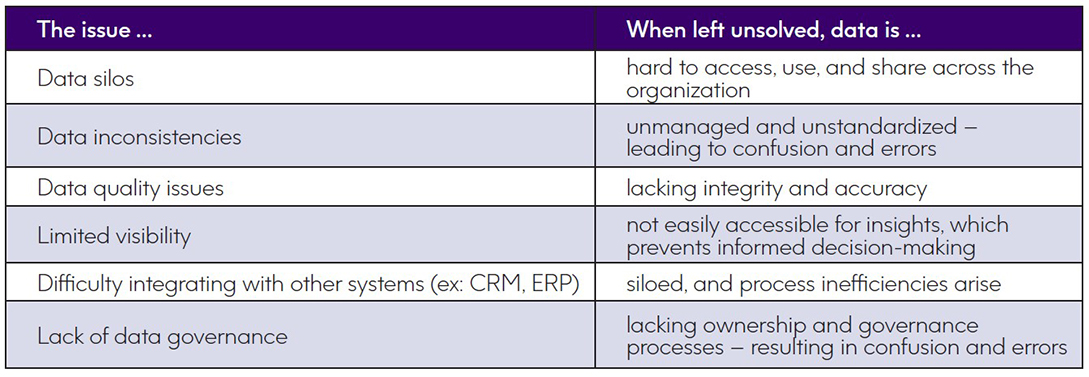Master Data Management Checklist: 3 Keys to Success
It’s an all-too-common scenario: critical data continues to flow into your organization through a growing list of business applications: mergers and acquisitions, new product launches, digital transformation initiatives, and so on. And when that data is siloed across your various data domains, you’re held back from maximizing its value. Not to mention, vendors and suppliers all have their own array of applications and data systems, which complicates the issue further.
Why does this matter?
Data silos have dangerous downstream impacts for your business – they create duplicates of critical data and generate false insights that lead to ineffective and costly decisions.
It’s also important to be aware of other common issues that we see for organizations as they accumulate more data – from more sources – than ever before. Here’s a glimpse:

Any (or all) of these challenges sound familiar? Not only do they lead to countless headaches for everyday users, but the effects can be very damaging for the business at large, leading to:
- Difficulty trusting the data for informed and timely decision-making – or, making incorrect and costly decisions with that data
- Loss of opportunity due to an inability to leverage data insights
- Higher operational costs to manually manage master data
To learn more read the full eBook.

Fill out the form and get instant access to the eBook.
